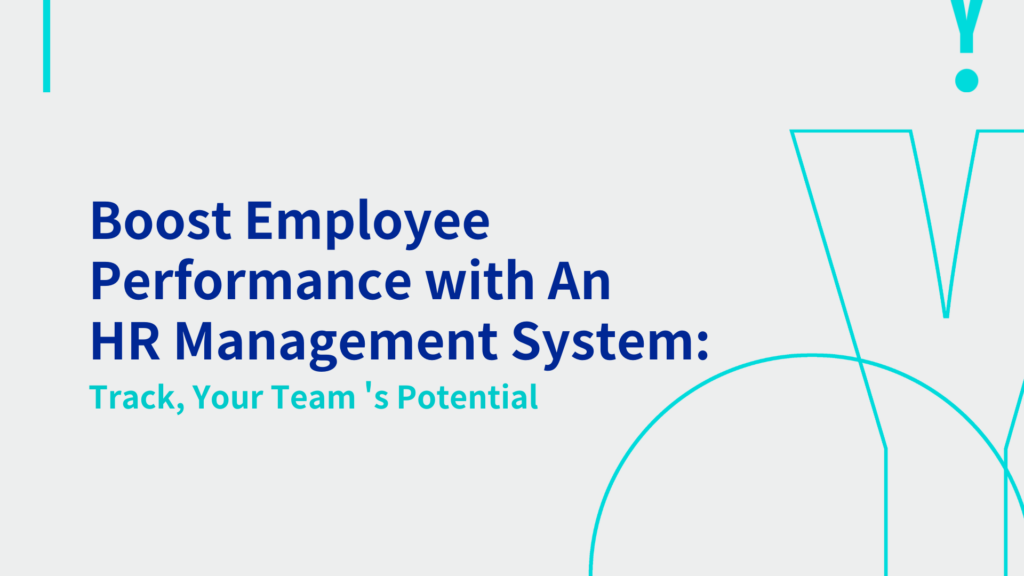
Every company aims for maximum productivity and efficiency in the highly competitive business environment of today. It might be difficult to monitor and manage staff performance efficiently, though. The majority of managers find that evaluating performance by hand takes a lot of time and is biased.
The complexity of tracking progress, establishing goals, and coordinating accomplishments with corporate objectives increases with team size. Performance insights can become fragmented using antiquated or ineffective methodologies, which can cause delays in improvement and lost growth opportunities.
An HR management system streamlines these issues by offering centralized performance tracking. This tool empowers managers to set clear goals, receive real-time insights, and establish feedback loops that drive progress. Additionally, investing in the right HR software helps managers stay focused on growth instead of navigating tedious processes.
So, let’s explore how an HR management application can revolutionize performance tracking and why it’s a strategic move for businesses aiming to thrive.
Why Traditional Performance Tracking Falls Short?
- Managing performance without tech can be overwhelming and, often, unreliable. Traditional methods—such as spreadsheets and periodic evaluations—lack real-time feedback, often resulting in outdated data and missed improvement opportunities.
- Managers struggle to see continuous performance and identify top performers or employees needing support. Traditional methods lead to a disjointed view, thus creating silos rather than cohesive teamwork.
An HR management application centralizes these insights. You can track progress and encourage a feedback culture, transforming employee performance tracking into a seamless experience. With instant access to updated information, businesses can stay responsive, proactive, and focused on growth.
Key Benefits of Using An HR Management System
Real-Time Performance Monitoring for Informed Decisions
An HR management application lets you monitor performance in real time, providing data at your fingertips. Its constant tracking helps you make faster, data-driven decisions and empowers managers to provide immediate feedback, addressing issues before they grow.
Real-time insights also reveal consistent performers, enabling quick recognition that boosts employee morale and engagement.
Streamlined Goal-Setting & Alignment with Company Objectives
One of the core elements of employee performance is clear, achievable goals. Without an efficient tracking system, setting and monitoring individual goals becomes challenging.
HR applications offer tools to set and monitor SMART goals—Specific, Measurable, Achievable, Relevant, and Time-Bound. Hence, these align employees’ efforts with your business objectives, driving everyone in the same direction.
Enhanced Employee Engagement through Continuous Feedback
Continuous feedback is a game-changer in performance management. Employees crave meaningful, timely feedback that helps them grow.
An HR management system enables structured and ongoing feedback rather than waiting for annual reviews. Moreover, it can automate reminders for check-ins, reducing the risk of neglected performance reviews and helping employees feel supported and recognized.
Improved Data-Driven Insights to Shape Development Plans
Data plays a pivotal role in effective decision-making. With an HR management application, managers can review performance patterns and identify skill gaps. Leveraging such insights, managers can create customized development plans tailored to individual growth.
As a result, employees are not only more productive but also better aligned with business needs.
Automated Reporting for Strategic Insights
Generating performance reports manually takes up valuable time. With HR software, managers can generate detailed reports in seconds, gaining a clear overview of individual and team performance. Automated analytics allow managers to predict trends, identify high-performing departments, and make informed decisions on resource allocation.
Key Features to Look for in An HR Management Application
1. Performance Tracking Dashboards
A centralized dashboard offers an at-a-glance view of each employee’s performance metrics, helping managers stay informed without endless spreadsheets. Look for dashboards that simplify tracking KPIs, goal progress, and attendance.
2. Goal Setting & Milestone Management
Goal-setting tools ensure employees understand and align with company objectives. Consequently, the right software lets managers assign goals, track milestones, and receive updates on completion.
3. Feedback Modules
High-quality HR management systems provide feedback and review modules, enabling consistent performance reviews. This feature allows employees to engage in self-assessments, which fosters accountability and self-improvement.
4. Employee Development Planning
The most valuable HR management tools include features for creating employee development plans. Look for applications that offer customizable templates to tailor individual learning and development initiatives.
5. Automated Reporting with Insights
Automated reporting simplifies data collection, allowing managers to create comprehensive performance reports in a few clicks. The best software will also offer visualization options for easy data interpretation.
An HR Management Application Drives A High-Performance Culture
Building a high-performance culture means supporting employees with clarity, tools, and motivation. An HR management application fosters this by making performance tracking transparent, supporting a growth mindset, and encouraging continuous feedback. Employees who see clear expectations and receive recognition are more motivated, committed, and aligned with company goals.
The application should have the following characteristics:
- Scalability and integration with current systems
- User-friendly interface for maximum adoption
- Customization options to fit your unique needs
- Customer support regarding resources
Integrating An HR Management Application
- Define Clear Goals for Implementation
Before implementing your new system, establish goals. Define what you hope to achieve—whether it’s reducing turnover, increasing productivity, or improving employee satisfaction.
- Ensure Adequate Training for Managers and Employees
Training is essential to get the most out of your HR application. Schedule comprehensive training sessions for managers and employees, moreover, ensuring everyone understands the platform’s features and benefits.
- Encourage A Culture of Open Feedback
When launching your HR management application, emphasize the importance of open feedback. Also encourage employees to use the system for self-assessment and development, creating a supportive environment for growth.
- Monitor & Adjust Based on Feedback
After implementation, gather user feedback and make adjustments as needed. Moreover, regularly review the effectiveness of the system and its alignment with your objectives.
End Note
For managers, tracking employee performance is crucial, yet challenging without the right tools. An HR management system centralizes performance data, enabling managers to focus on strategy rather than endless administrative work. So, with features like real-time monitoring, feedback modules, and automated reports, businesses can create a culture of continuous improvement.
Adopting an HR management application aligns your team’s efforts with business goals, providing the insight needed to optimize performance and foster a thriving, motivated workforce. Therefore, contact the professionals of YOOV and integrate the best HR system in your business.
Connect with YOOV

Tel:+852 2988 8883
WhatsApp:Click Here
Email:cs@yoov.com
Website:https://www.yoov.com/